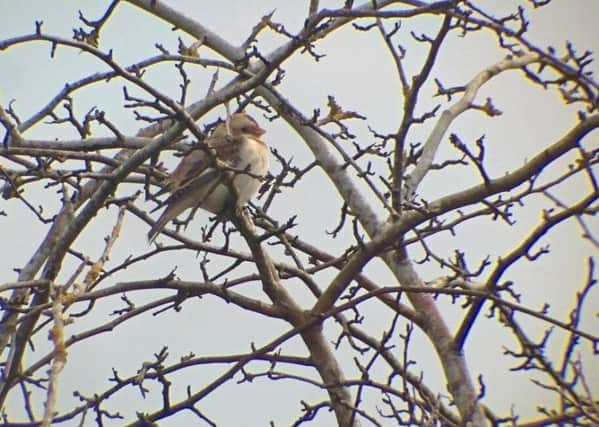Twenty rare bird species recorded on Yorkshire farms


The Game & Wildlife Conservation Trust’s 2016 Big Farmland Bird Count involved almost 1,000 farmers who spotted some 130 species across the UK.
This year’s count beat the last two years’ records and encouragingly for conservationists, several rare birds were spotted during the course of the survey. The appearance of a ring ouzel and snow bunting proved particular highlights.
Advertisement
Hide AdAdvertisement
Hide AdFarmers were asked to spend 30 minutes sometime between February 6-14 recording what they saw on a section of their land.
Across Yorkshire, around 70 farmers and land managers took part and between them they recorded the presence of bird species on more than 20,000 hectares of farmland.
Locally, nearly 100 different species were seen with starlings, lapwings and fieldfares among the 10 most abundant. Another 20 species spotted feature on the Red List for Birds of Conservation Concern.
The ring ouzel was spotted by the National Farmers’ Union vice-president Guy Smith in a field adjacent to his house in Essex.
Advertisement
Hide AdAdvertisement
Hide AdRing ouzels usually migrate from the Mediterranean to the west of the UK to breed and this ouzel was ahead of the game, as breeding does not usually occur for the species until mid-April to mid-July.
Nationally, the most commonly seen species were blackbirds and woodpigeons, seen by more than 80 per cent of participants. Robins, blue tits, pheasants, carrion crows and chaffinches were seen by more than 70 per cent of farmers.
Matt Willmot, Natural England advisor, took part for the third successive year.
He said: “I will definitely be counting again next year. The time you put in really counts towards the support of our farmland birds. It is always a pleasure not only to take part in the event, but to encourage local farmers to count their resident birds as well.”